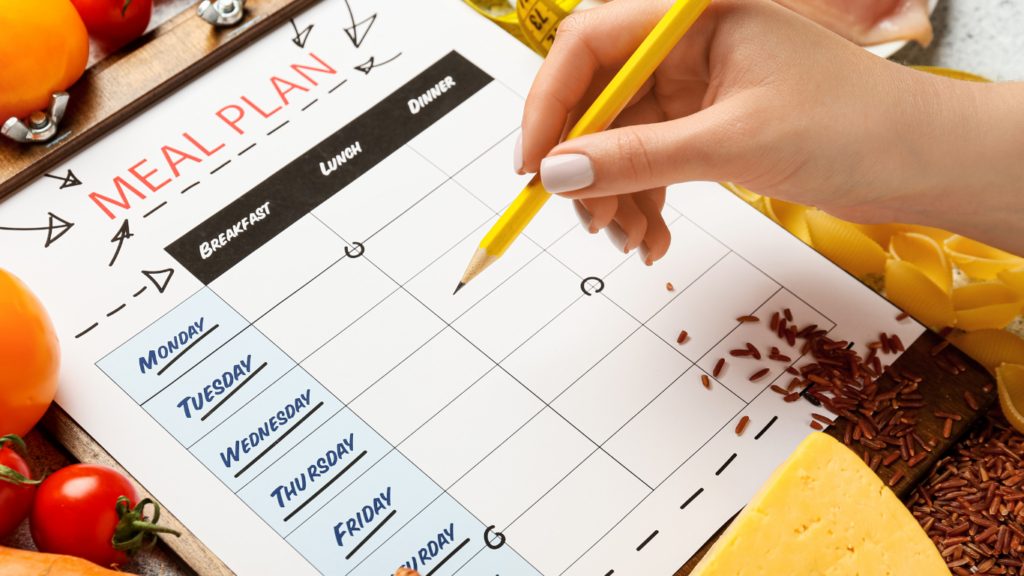Planning family meals can feel like a juggling act, especially with busy schedules and picky eaters in the mix. I know firsthand how overwhelming it can be to balance nutrition, variety, and time constraints while keeping everyone happy at the dinner table. But trust me, it doesn’t have to be so complicated.
Benefits Of Family Meal Planning
Organizing family meals simplifies daily routines, leading to less stress and more meaningful dining experiences. It creates a foundation for better nutrition, cost-saving habits, and efficient food management.
Saves Time And Stress
Planning meals reduces the time spent deciding what to cook each day. With a clear schedule, I avoid last-minute decisions and multiple trips to the store. Prepping ingredients ahead of time or batch cooking on weekends ensures that meals are ready quickly during busy weekdays.
Promotes Healthier Eating
Meal planning makes it easier to include balanced, nutritious meals. By choosing recipes and ingredients in advance, I incorporate more vegetables, whole grains, and lean proteins into our diet. Having a plan reduces the likelihood of relying on unhealthy, processed foods or takeout.
Reduces Food Waste And Saves Money
- Pre-planned meals align with grocery shopping lists, lowering the risk of over-buying.
- I use perishable items before expiration by mapping out meals that incorporate them.
- Strategic planning, like reusing leftover ingredients (e.g., chicken for soups or stir-fries), maximizes value from purchases and minimizes waste.
Steps To Effective Family Meal Planning

Streamlining family meals becomes easier with a structured approach. Following simple steps ensures the process saves time, reduces stress, and includes everyone’s needs.
Assess Your Family’s Needs And Preferences
I start by identifying my family’s dietary needs and taste preferences. Allergies, age-appropriate portions, and eating schedules guide meal choices. For instance, my kids prefer simple dinners like tacos or pasta, while adults may enjoy more complex meals. Rotating favorite dishes keeps everyone satisfied while encouraging variety.
Create A Weekly Meal Plan
I outline meals for the week, assigning each day a specific menu. Mixing protein sources, grains, and vegetables ensures balanced nutrition. For example, I’ll plan roasted chicken with veggies on Monday, vegetarian stir-fry on Wednesday, and pasta with marinara sauce on Friday. Including one leftover day prevents waste. Matching meal difficulty with busier or slower days helps me stick to the plan.
Make A Shopping List And Stick To It
Based on the meal plan, I create a detailed shopping list. Grouping items by category, such as:
- produce
- dairy
- pantry staples
speeds up grocery trips. Sticking to the list prevents unnecessary purchases, saving money and avoiding waste. For example, if a recipe calls for zucchini, I purchase only enough for that meal rather than buying extra.
Tips For Simplifying The Process
Streamlining family meal planning creates more time for meaningful moments at the table. Using practical strategies ensures the process is efficient and stress-free.
Utilize Meal Planning Apps And Tools
Meal planning apps offer valuable features like recipe organization, grocery list generation, and nutrient tracking. Apps like Mealime and Paprika simplify weekly menu creation by tailoring recipes to specific dietary preferences. I use tools with calendar integration to visually map meals, ensuring variety and balance throughout the week. Digital grocery lists cut down on manual tracking and reduce forgotten items.
Incorporate Leftovers Creatively
Leftovers can become fresh, appealing meals with small adjustments. I turn roast chicken into chicken salad wraps or soup the next day, minimizing waste. Pasta or rice can transform into casseroles or stir-fries by adding new ingredients like vegetables and different proteins. Planning for leftover reinvention removes additional cooking time while maximizing resources.
Get The Whole Family Involved
Involving the family in meal planning fosters engagement and eases the workload. I assign age-appropriate tasks like selecting a recipe or prepping ingredients. Kids contribute by picking a meal theme for the week, while teens assist in actual cooking. When everyone participates, meals reflect collective preferences, and the division of tasks speeds up the process.



 Community Engagement Manager
Community Engagement Manager
